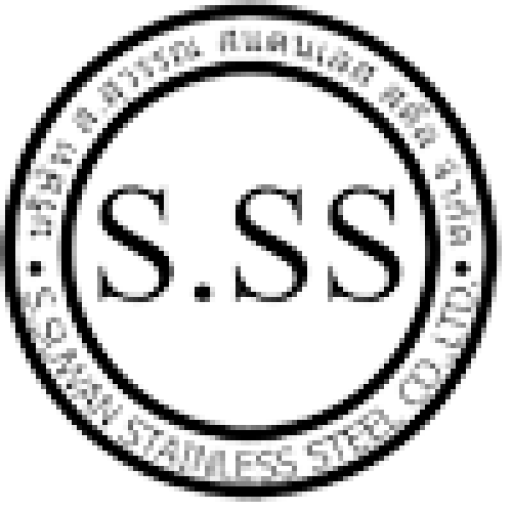What is stainless?
Stainless steel or stainless steel is an alloy where the main component is iron and chromium at least 10.5% by weight and must contain less than 1.2% carbon. Adding other types of substances such as nickel, manganese, copper, molybdenum, aluminum, etc. to enhance the properties of stainless steel to suit various applications. The main properties of stainless steel are: No rust, moisture resistant, corrosion resistant.
stainless steel can improve corrosion resistance properties and other desired properties can be increased by adding A mixture of chromium and adding other elements such as molybdenum, nickel and nitrogen into stainless steel, there are more than 60 types.
With unique properties such as difficult to rust compared to metal. or other types of materials, low maintenance costs easy to weld and forming The duration of use is worth the price. and can be completely reused thus making stainless It is a precious metal, its properties and uses are limitless.
Type of stainless steel
-
Austenitic
Magnet doesn’t suck In addition to the composition of 18% chromium, nickel is also added to enhance corrosion resistance. The austenitic type is the most widely used. among stainless steel Austenitics with a high content of 20%-25% chromium and 1-20% nickel are resistant to oxidation at high temperatures. which is used in furnace components heat pipe And the heat shield in the engine is called stainless steel. Heat Resisting Steel
-
Ferritic
Magnet low carbon content and contains chromium as the main ingredient, which is about 13% or 17%
-
Martensitic
Magnet It generally contains chromium. 12% and a moderate carbon content Often used to make forks, knives, cutting tools. and other engineer tools which require outstanding features in Abrasion resistance and durability
-
Duplex
magnet It has a mixed structure between ferrite and austenite. It contains approximately 18-28% chromium and 4.5-8% nickel. This steel is often used in high chlorine applications to prevent corrosion. Pitting corrosion and increasing corrosion resistance. The cracks due to pressure (Stress corrosion cracking resistance) crystallized hardened steel. (Precipitation Hardening Steel) contains 17% chromium and nickel, copper and niobium alloys. Because this type of steel can be hardened in one go. It is therefore suitable for axes, pumps, valve heads and aerospace components. The most commonly used stainless steels are austenitic and ferritic, which account for 95% of stainless steel. currently in use
What are the different surface finishes of stainless steel?
| No.1 | Slightly rough surface, matt gray color, is the surface of industrial stainless steel pipes. Stainless steel surface, rolled angle and stainless steel plates thicker than 3mm or more |
| 2D (No.2D) | Smooth surface, slightly lighter silver-gray color. It is caused by the use of stainless steel sheets to be cold-rolled, annealed and acid etched. Often not as popular as other stainless steel surfaces |
| 2B (No.2B) | Smooth surface, quite shiny silver color. reflect light well (But not as shiny as Mirror surface) caused by bringing the sheet to cold-rolling, annealing and acid etching before being lightly rolled with a polishing roller. It is a popular surface such as shiny stainless steel pipes for furniture. and stainless steel sheet with thickness less than 3mm |
| BA (No.2BA) | Smooth surface, silver color and more gloss, reflects 50-55% of light (not as shiny as Mirror surface), similar to the production of 2B surface, but goes through a polishing process with a polishing roller last. This BA surface is best achieved with a Mill finish, after which it is subjected to a Polish finish to make the stainless steel sheet. It is the desired pattern or to add even more reflections. |
| No.4 | The skin is smooth, with large, rough-looking stripes. The color is silver, quite shiny. Caused by the use of stainless steel surface 2B to polish with sandpaper no. 150-180. |
| No.4 Hairline | Smooth surface with fine cat hair pattern, nicely arranged, quite shiny silver color. It’s a popular texture. Caused by the use of stainless steel surface 2B polished with 180-300 sandpaper or as appropriate. |
| Mirror (No.8 หรือ No.12) | Smooth surface, silver and the most shiny like a mirror. Caused by bringing stainless steel BA surface into a highly polished process. These include sanding with 1000 or higher grit, followed by wool, aluminum powder, chromium oxide. |
Alloy type
- No. 304 is a basic stainless steel used for decorative purposes. This type is easy to form. and prevents rust as well.
- Number 304L is 304 stainless steel with less carbon. Widely used in welding applications
- No.316 is designed to prevent rust very well. Used in heavy industry and places near the sea
- Number 316L is No. 316 stainless steel with less carbon
- No.430 is 100% chrome-based stainless steel and is less prone to rust than 300. They are commonly used in interiors.
Benefits of using stainless steel
- Use in Corrosive Environment
- Cold temperature work Prevents breakage
- High temperature applications, prevent scale and maintain strength
- High strength vs. mass
- Hygienic conditions require high cleanliness
- architectural work (Aesthetic appearance), no rust, no need to paint
- No contamiation, prevent reaction with catalyst
- Wet abrasion resistance







